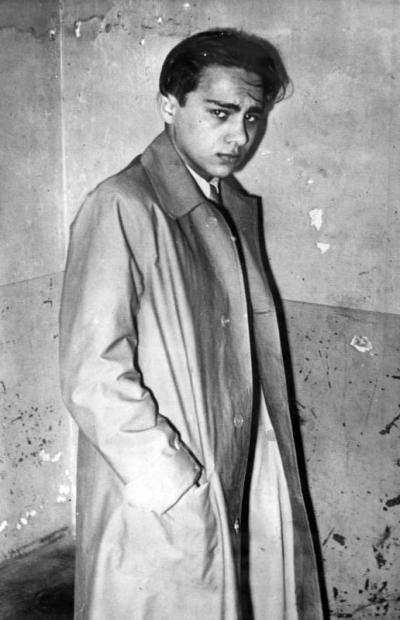The story of Herschel Grynszpan

On survival, being forgotten and remembrance
Herschel’s sister Berta was murdered by the Nazis in Poland in 1943. His parents and his brother Markus survived the war and emigrated to Israel. Later, in 1961, his father, Sendel, gave a witness statement in the trial against the former SS Obersturmbannführer Adolf Eichmann in Jerusalem, describing in detail the violent deportation of the Jews in 1938.[29] Herschel’s uncle Abraham, one of the 70,000 Jews delivered to Germany by the Vichy government, was murdered in Auschwitz. His aunt Chawa survived the Holocaust under unknown circumstances and returned to Paris.
Following the cancellation of the show trial, Herschel Grynszpan played no further role in the Third Reich, and was forgotten. After the war ended, no-one except his family gave any thought to the young boy who just a few years previously had caused such a surge of feeling among the general public. His relatives tried to find him, but their efforts were in vain. Herschel Grynszpan remained lost without trace, and in 1960, he was officially declared dead by the Hanover district court. Today, there are “stumbling stones” (Stolpersteine) in memory of Herschel and his sister Berta on the site in Hanover where the apartment block where the Grynszpans lived used to be. Herschel’s name is also included in the list of thousands of others engraved in the monument to the murdered Jews of Hanover on the Opernplatz in the centre of the city. Work continues on researching Herschel Grynszpan’s story and remembering his name.
Katarzyna Salski, April 2021
Literature:
Armin Fuhrer: Herschel. Das Attentat des Herschel Grynszpan am 7. November 1938 und der Beginn des Holocaust. Berlin 2013.
Dagi Knellessen: Novemberpogrome 1938. „Was unfassbar schien, ist Wirklichkeit“. Pädagogisches Zentrum des Fritz Bauer Instituts und des Jüdischen Museums (Hrsg.), Frankfurt am Main 2015.
Online:
https://www.juedische-allgemeine.de/juedische-welt/ein-attentat-mit-folgen/
https://www.dubistanders.de/Herschel-Grynszpan
https://www.dhm.de/lemo/biografie/herschel-grynszpan
[29] See Eichmann in Jerusalem, p. 207 f.










